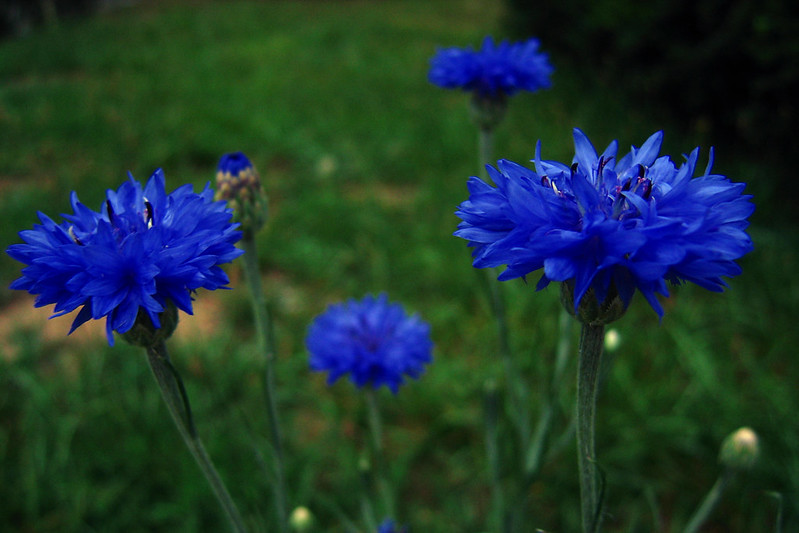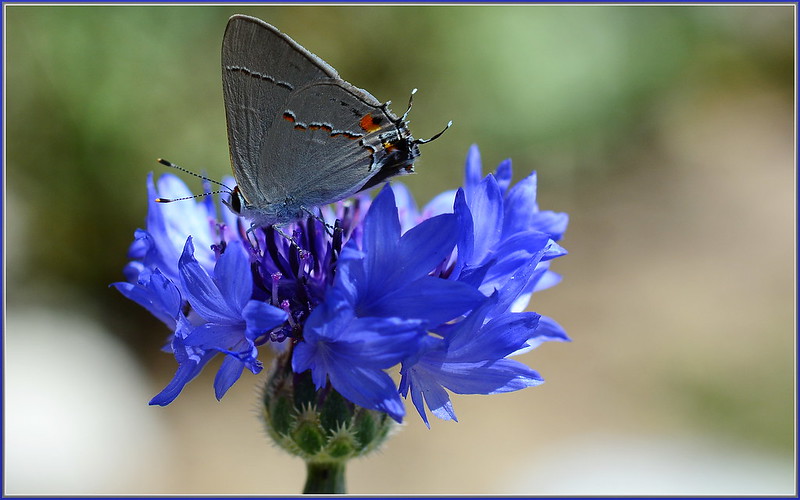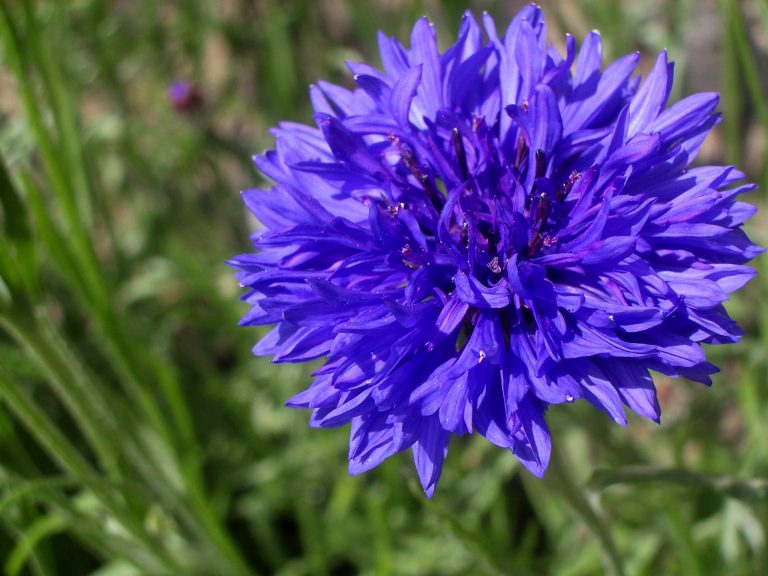Homeowners have a lot of planting choices for a flower home garden. They can, for instance, make their garden pop by growing stargazer lilies.
However, sticking with one kind of plant for your flowerbed isn’t enough. You’ll want to plant more than one type of flower to further enhance your yard’s curb appeal.
One of the plants that you can add to your garden is the cornflower. This beautiful leggy perennial can adapt to whatever condition you throw at it. Once planted and provided with time to settle in, the blue cornflower will be in your garden for a long time.
As a well-known naturalizing flower, the cornflower is a plant in formal estates and country cottage gardens. Wherever you grow these clump-forming plants, they bring a wealth of color and structure. What’s more, they attract a range of garden wildlife.
Cornflower Plant History
Cornflower, a bachelor’s button or bluebottle, is an annual flowering plant native to Europe, Western Asia, and North Africa. It has been cultivated for centuries and was once a weed in grain fields. However, it quickly became a popular garden flower due to its vibrant blue color and ease of cultivation.
Historically, cornflower has had various uses. It was used as a natural dye for textiles, food, and medicinal purposes. In ancient times, it was believed to have healing properties and was used as a remedy for various ailments.
Today, cornflower is widely cultivated in gardens all over the world. According to the Guardian, cornflowers are one of the most commonly grown annuals in the UK. They are also widely used in the floral industry as cut flowers due to their attractive appearance and long-lasting blooms.
Regarding cultural significance, cornflower has been associated with various traditions and beliefs. In some cultures, it is believed to symbolize loyalty, love, and luck. In France, it is a symbol for Bleuet de France, used to commemorate soldiers who died during World War I. It is also the national symbol of Germany, known as Kornblume.
Beyond its cultural significance and use as a garden flower, cornflower has numerous environmental benefits. It is known for attracting bees, butterflies, and other beneficial insects. These insects help promote pollination and are essential for healthy ecosystems.
Cornflower Varieties And Types
Cornflower, or Centaurea cyanus, is a versatile and beautiful plant in various colors, sizes, and shapes. Several varieties and types of cornflowers are available, each with unique characteristics.
The most common variety of cornflower is the blue cornflower, also known as the wild cornflower or the bachelor’s button. This variety has bright blue flowers and grows up to three feet tall. Other cornflowers include white, pink, and purple, each with unique beauty and charm.
There are also several types of cornflowers, including single-flowered, double-flowered, and frilly-flowered. Single-flowered cornflowers have a single row of petals and a distinctive center cone, while double-flowered cornflowers have a fuller appearance with multiple petals. Frilly-flowered cornflowers have a ruffled appearance and are popular for cut flower arrangements.
Another cornflower type is the dwarf cornflower, a shorter and more compact version of the traditional cornflower. Dwarf cornflowers are ideal for small gardens or containers and come in various colors.
Whether you prefer the conventional blue cornflower or one of the many other varieties and types available, there is sure to be a cornflower that will add beauty and interest to your garden. With its stunning blooms and easy-to-grow nature, the cornflower is popular for gardeners of all experience levels.
What Gives a Cornflower Its Blue Hue?
The Roses are red. Violets — and cornflowers — are blue. The color of the cornflower has something to do with the structure of the plant’s pigment.
According to a study published in Nature, the blue color arises from a complex of six molecules: two calcium ions, one magnesium ion, one ferric iron, a flavone molecule, and an anthocyanin molecule. Scientists believe that this tetrametal complex forms an unusual “supermolecule” in the cells of the blue cornflower.
If you happen to come across a cornflower, do spare a thought for the dedicated chemists who have spent years figuring out what makes this flower blue.
How Do You Grow and Take Care of Cornflowers?

Planting
You can buy cornflower seeds or purchase young plants from nurseries or garden centers for planting in spring.
Easy to grow from seed, cornflowers have a high success rate when you plant this flower several times during the growing season. Begin by sowing the seeds indoors. You can transplant the seedlings after winter, specifically once the danger of frost is over.
Once late spring arrives, sow a row of seeds directly in the garden. Press them in about half an inch. Then, rake them over using fresh soil and water lightly.
Although cornflowers can tolerate poor soil conditions, you should still plant them in rich, loamy soil enriched with phosphorus. This soil provides fruit and flowering plants an extra boost.
Pro-tip: you can plant other cornflower varieties in the middle of the summer for an attractive autumn display. Cornflowers come in a range of colors, which allow you to create a colorful garden.
Fertilizer
Use a balanced flower fertilizer to feed cornflowers. Do this once a month during the spring and summer months.
Check the instructions on the fertilizer label for proper dosage, and apply half the suggested dose. You’ll want to avoid over-fertilizing a cornflower, as this plant can be invasive if the soil is too fertile.
Watering
Water cornflowers once a week — but only do this on weeks when there’s no rainfall. If you’re going to water this plant, let the soil dry out slightly between watering sessions. Never allow the soil to become too dry, though, as the cornflower may flop over if you neglect to water it.
Pruning
Pruning is an essential aspect of cornflower plant care, as it helps to promote healthy growth, control the size and shape of the plant, and encourage blooming. Regular pruning can also help prevent disease and pest problems by allowing for better air circulation and reducing overcrowding risk.
When it comes to pruning cornflowers, it is best to start early in the season by removing any dead or damaged foliage and cutting back any leggy or overgrown stems. As the plant grows, continue to pinch back the tips of the stems to encourage branching and promote more blooms.
It is essential to use clean, sharp pruning shears to make clean cuts and prevent damage to the plant. Avoid pruning too heavily or too late in the season, as this can reduce the plant’s ability to bloom and increase the risk of disease.
Common problems during pruning include accidentally cutting off buds or damaging the stem. To avoid these issues, take care when pruning and cut at a slight angle to promote healthy growth. If you accidentally damage the stem or remove a bud, try to seal the wound with a bit of pruning sealer to prevent infection.
Pollination
Cornflowers are beautiful, hardy plants that use pollinators for fertilization and reproduction. While these plants can self-pollinate, they benefit significantly from bees, butterflies, and other insects that help transfer pollen from flower to flower.
Providing a welcoming environment for pollinators is essential to ensure that your cornflowers are adequately pollinated. It includes planting a variety of flowers that attract bees and butterflies and avoiding the use of harmful pesticides or chemicals.
One of the best practices for pollinating cornflowers is encouraging the growth of beneficial insects by providing plenty of nectar-rich flowers, such as coneflowers, asters, and goldenrod. You can also create a habitat for pollinators by adding bee houses or planting shrubs and trees.
However, issues can also arise during pollination. The most common include a lack of pollinators or issues with flower structure, making it difficult for pollinators to access the pollen. If you notice a lack of pollinators in your garden, try adding more flowers or providing a source of water for bees and butterflies. If you have issues with flower structure, such as too tightly packed petals, try gently separating the petals to make the pollen more accessible.
Common Pests And Diseases
Cornflowers can be susceptible to various pests and diseases that can damage or even kill the plant if left untreated. Common problems affecting cornflowers include aphids, spider mites, and whiteflies, while common diseases include powdery mildew and fungal infections.
Symptoms of pest infestations can include yellowing or browning leaves, stunted growth, and insects on the plant. Symptoms of diseases can consist of wilting or yellowing leaves, powdery or fuzzy growth on the leaves or stem, and brown or black spots on the leaves or flowers.
If you suspect that your cornflowers are affected by pests or diseases, it is essential to act quickly to prevent further damage. Treatment options can include using insecticidal soap or neem oil to control pests or fungicides to treat diseases. In some cases, removing affected plant parts or even the entire plant may be necessary to prevent the spread of disease.
Prevention is also crucial in managing pests and diseases in cornflowers. It includes planting disease-resistant varieties, ensuring plants have adequate spacing and air circulation, and avoiding overwatering or overcrowding. Regularly inspecting your plants and promptly addressing any issues can help prevent infestations or disease outbreaks.
What to Do with Cornflowers After Flowering

You can cut cornflowers and turn them into a bouquet if you’d like. Cut newly opened blooms early in the morning when making a fresh bouquet. Then, set the stems in a jar of warm water immediately.
Next, remove the flower’s lower leaves that might foul the water. After that, arrange the cornflowers in a vase. Don’t forget to add fresh water to the vase. Cornflowers can last up to a week (or even longer) if you mix in some floral preservative to the vase water.
Alternatively, you could leave the cornflowers in your garden. Apart from making your garden the talk of the town, the flowers will attract butterflies, bees, and other beneficial insects.
Growing Cornflower Plant From Seeds
Growing cornflowers from seeds is a great way to enjoy the beauty and benefits of this lovely plant. Starting from seeds allows for greater control over the growing process and can result in stronger, healthier plants. Here are some best practices for growing cornflowers from seeds:
- Start indoors: Begin by planting cornflower seeds indoors in late winter or early spring. Use a seed starting mix and plant seeds about 1/4 inch deep. Keep the soil moist and place the seed tray in a sunny location.
- Transplant outdoors: Once seedlings have developed their second set of true leaves, they can be transplanted outdoors. Choose a sunny location with well-draining soil.
- Water regularly: Cornflowers prefer moist but not waterlogged soil. Water regularly, particularly during hot and dry periods.
- Fertilize occasionally: Use a balanced fertilizer once or twice during the growing season to promote healthy growth and blooming.
Common problems growing cornflowers from seeds include poor germination, damping-off, and transplant shock. To avoid these issues, ensure that seeds are planted at the proper depth and watered regularly but not excessively. Avoid over-crowding of seedlings, and ensure adequate air circulation. Providing good lighting and temperature control can also improve germination rates.
Cornflower Plant Companion Plants
Companion planting involves growing different plants close to one another to promote growth and reduce pest problems. Companion planting has been practiced for centuries and has been shown to have numerous benefits, such as increasing soil fertility, deterring pests, and attracting beneficial insects. When it comes to cornflowers, companion planting can be beneficial. Some plants can attract pollinators, which will help increase the yield of cornflower blooms. Others can repel pests, reducing the need for pesticides. Here are some of the best companion plants for cornflowers:
- Cosmos: Cosmos is a colorful annual flower that attracts pollinators and adds visual interest to the garden. It also helps to deter pests such as cabbage worms.
- Marigold: Marigold is a hardy annual known for its ability to repel pests such as nematodes and aphids. By planting marigolds alongside cornflowers, you can help protect your crop.
- Alyssum: Alyssum is a low-growing annual flower that attracts pollinators and has a sweet fragrance. Its bright yellow blooms add a cheery touch to the garden.
- Polka Dot Plant: Polka dot plant, also known as Hypoestes phyllostachya, is a low-growing annual that adds visual interest to the garden and can be used as a ground cover. Polka dot plant care is easy and has bright colors that attract pollinators.
- Friendship Plant: Friendship plant, also known as Pilea involucrata, is a low-growing perennial that adds visual interest to the garden and is known for its air-purifying properties. A growing friendship plant can help purify the air and reduce indoor pollutants.
What are Other Uses for Cornflowers?
Cornflower isn’t just an ordinary flower. It’s an herbal garden plant.
Believe it or not, you can use the dried flowers of this beautiful plant to make medicine. People take cornflower tea to treat water retention, constipation, and fever. They also drink tea as a stimulant for the gallbladder and liver. Women take it for vaginal yeast infections and menstrual disorders.
Although you can use cornflowers to make medicine, consult a medical professional before taking any herb.
You can use cornflowers in cooking. Add this plant to butter lettuce and other veggies to whip up a mixed salad. Adding cornflower to flavor your cakes is also a good idea.
Cornflower goes beyond beautifying your garden. You can take advantage of the plant’s health benefits and therapeutic value.
Frequently Asked Questions
1) What is the best soil for Cornflowers?
Cornflowers prefer well-draining, sandy soil with a pH of 6.0-7.5. Adding organic matter can improve soil quality. Avoid heavy clay or overly fertile soils, as they can cause excessive foliage growth at the expense of blooms.
2) How much sunlight do Cornflowers need?
For cornflowers to thrive, they must be exposed to direct sunlight for at least 6 hours a day, either in full sun or partial shade. However, they can also tolerate some shade, particularly in hotter climates, as excessive heat can cause wilting.
3) When is the best time to plant Cornflowers?
The best time to plant cornflowers is in the spring after the last frost date in your area. They can also be planted in the fall in milder climates. Sow seeds directly into the soil or start indoors 4-6 weeks before the last frost date.
4) What are some common pests and diseases that affect Cornflowers?
Common pests affecting cornflowers include aphids, thrips, and spider mites. Diseases such as powdery mildew and rust can also be problematic. But with proper care and sanitation, you can prevent and manage these issues.
5) Can Cornflowers be used for medicinal purposes?
Cornflowers can be used for medicinal purposes, particularly in herbal medicine. They contain compounds that have anti-inflammatory, antioxidant, and analgesic properties. However, it’s best to seek advice from a professional before taking them.






